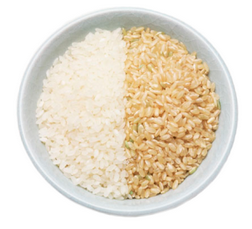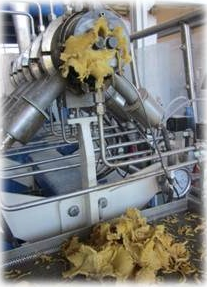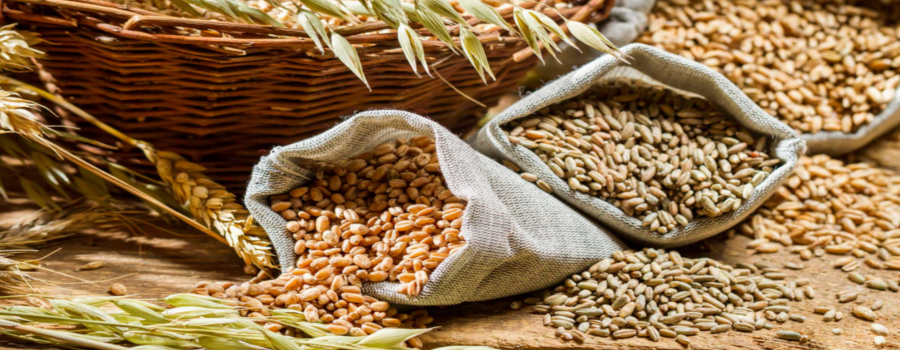There is no doubt that cereal grain are the main source of the diet of consumers around the world. In fact, global cereal production in 2016 was 2,6 million tonnes (FAO data) and account for 30 to 70% of daily energy consumption (FAO data). Cereal intake should be 2-3 servings a day, and, according to the Mediterranean diet model, the consumption of bread and cereal derivates (pasta, rice and other cereals) should preferably be done as whole grain form.

Cereal grains are a great source of carbohydrates, protein, dietary fiber, vitamins (especially from B group) and minerals. In addition to the germ and the endosperm, whole grains, in contrast to the refined ones, contain the bran fraction which is eliminated mainly during the refining process. Whole grains are a great source of vitamins, minerals and phytochemicals, and there are numerous studies linking these properties to the prevention of chronic diseases.
This clear evidence of the importance of the consumption of whole grains has encouraged that many countries recommend their consumption and in some of them, like the United States, the campaign has arrived at great restaurants and schools where all type of cereals are used with the aim of modify the consumer perception of “wholegrain concept“.

In Spain, despite these recommendations, most cereal products are still made from refined flour. This happens, in part, because the food industry finds difficulties to adapt the recipes from whole grain ingredients because the incorporation of fiber generates some technological problems. On the other hand, there is a lack of demand on the part of the consumers with an educated palate to certain flavors and textures in the canons of the refined products.
Undoubtedly, there is a huge need of training consumers in the knowledge of which are the healthy options. However, there is an awakening of the industrial instinct to improve the nutritional profile of cereal based food products, through the moderation of the physiological response that they exert in the organism (eg, through reducing the glycemic index) and through the feasibility in the industrial application of whole grains, improving their incorporation into products and reducing the detrimental effects of sensory quality associated with the incorporation of fiber
A technological revolution come up to rich this challenges and to develop new cereal products that bring a clear benefit to health, such as high protein content, high fiber or whole grains, with new sensory experiences, cereals and less common flours (chia, quinoa, legumes) and of course, rich and appetizing. More whole grains in our kitchens, in our tuppers and in our appetizers.
Some of the improvements that are being made by the sector in recent years and that put technology at the service of cereals are:

Fiber-rich pre-fermented doughs, has been shown to be an advantage in the production of bread, which allows the avoidance of defects in bread volume or crumb texture that direct application of the fiber can cause. In addition, the pre-fermentation of the mass of whole grains or fiber-rich doughs gives breads with less impact on the glycemic index.
Grinding or milling systems that remove only the parts of the grain that deteriorate the technological quality of the cereals and improve the retained concentration of bioactive compounds. This means that it is possible to obtain whole flours with more nutritional quality but without the detriment of the quality in final cereal product that causes the incorporation of bran.
Softening processes of whole grains; they are processes prior to the incorporation of the grain in baking dough that allow the appearance of whole grains with a soft and pleasant texture inside the dough and that do not affect the baking process.

Another option is the of the fiber aqueous extraction, which allows the same nutritional and healthy benefits, without the detrimental effects of incorporation of fiber into bakery products.
The fractionation technologies allow the production of ingredients rich in β-glucans easily applicable thanks to better physical properties (like hydration or viscosity) and technological.
Another technological improvement to be able to offer all the value of the whole cereals is the transformation of the part of the insoluble fiber to soluble through the application of the extrusion technology.
There are many whole grains, not just wheat, waiting for their opportunity to apply the appropriate technology to favor their use while maintaining their nutritional properties and giving rise to new products based on whole grains.
- A better life and a better future; right to foods - 16 October 2024
- Food reformulation; a step forward, that it is possible - 21 May 2024
- World Food Day; with soul of water - 16 October 2023
